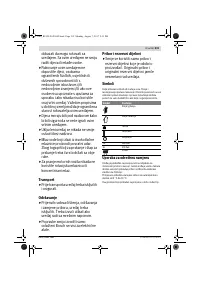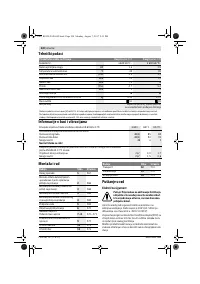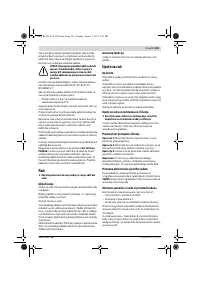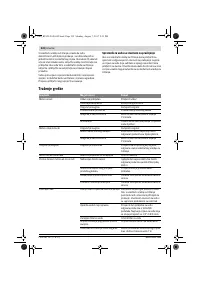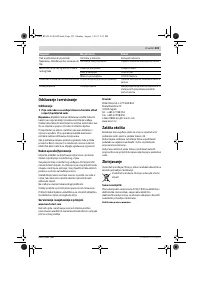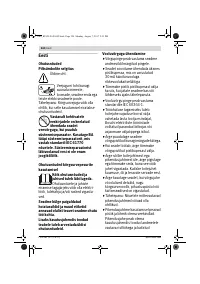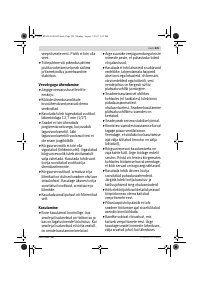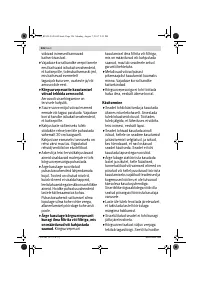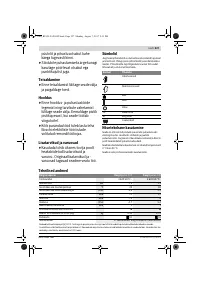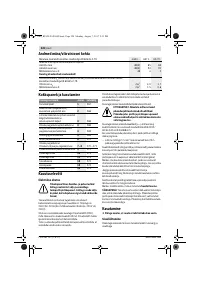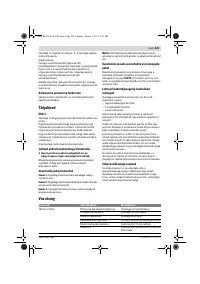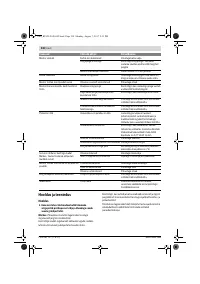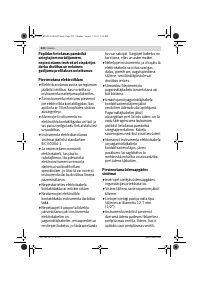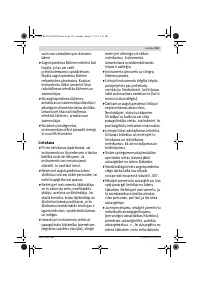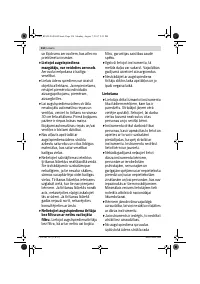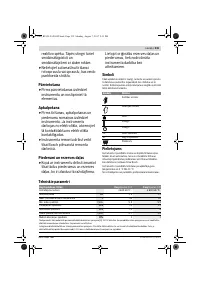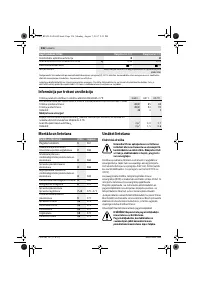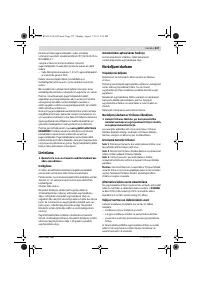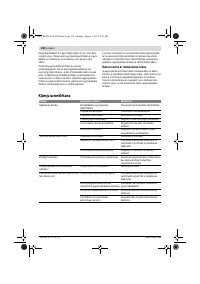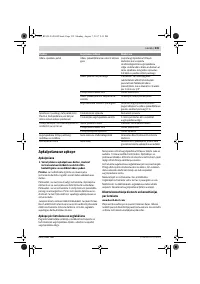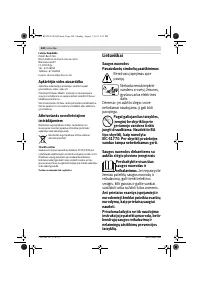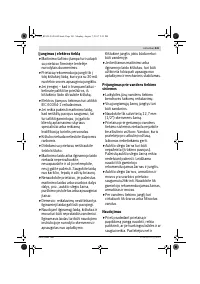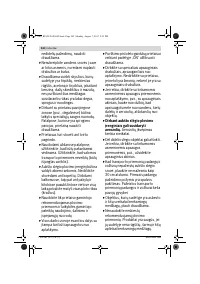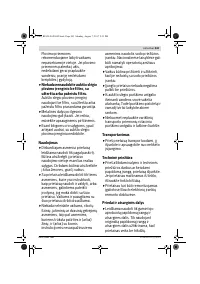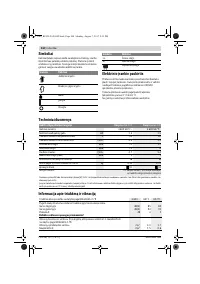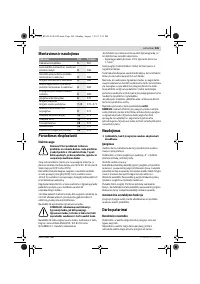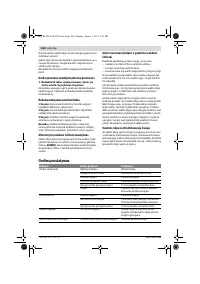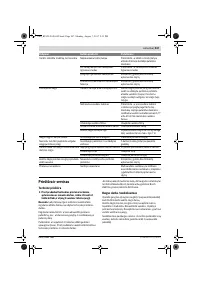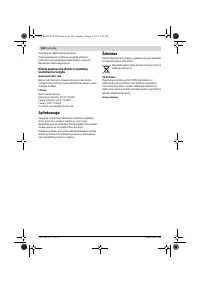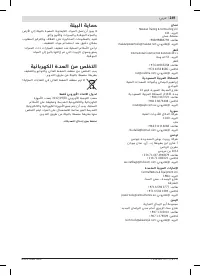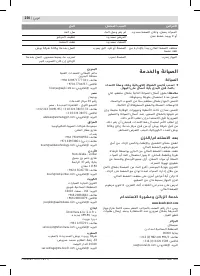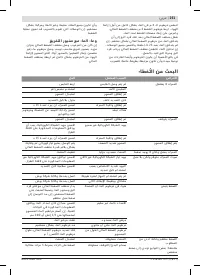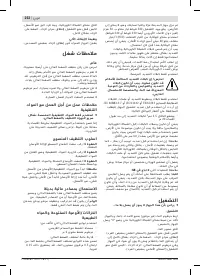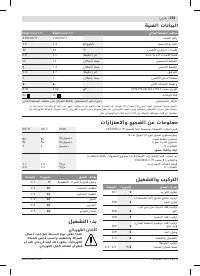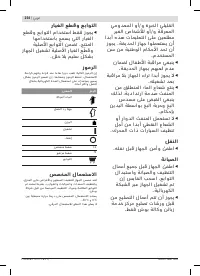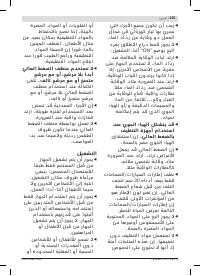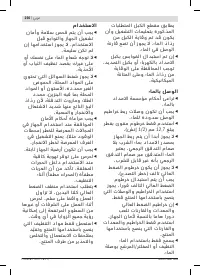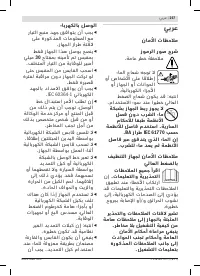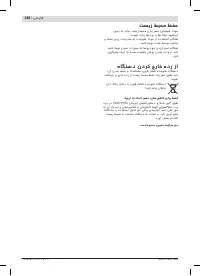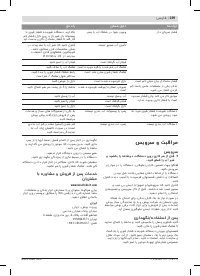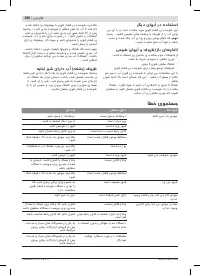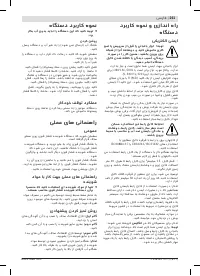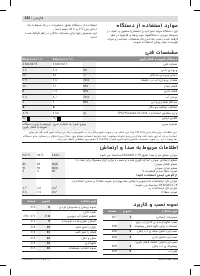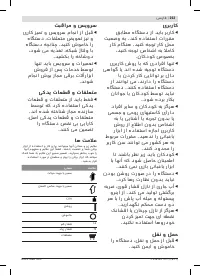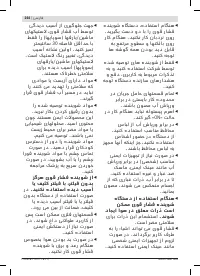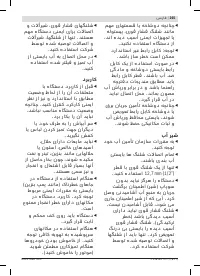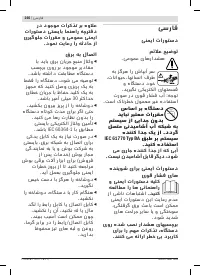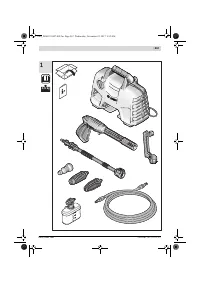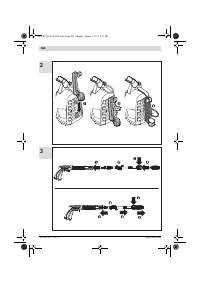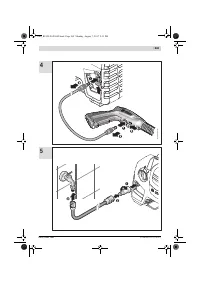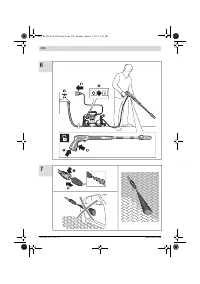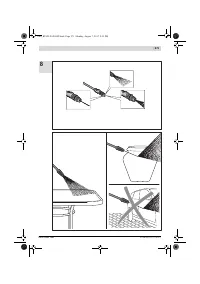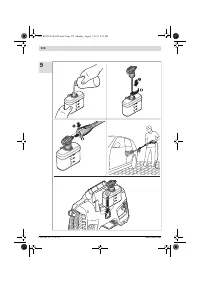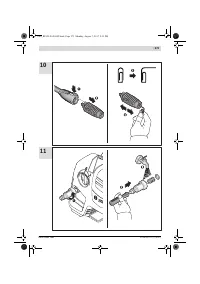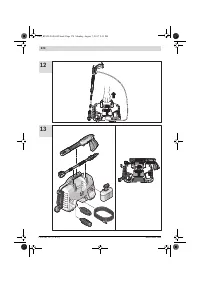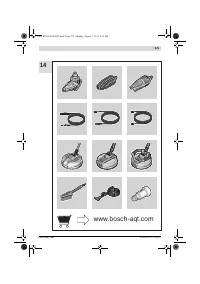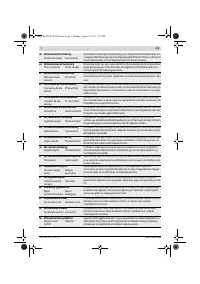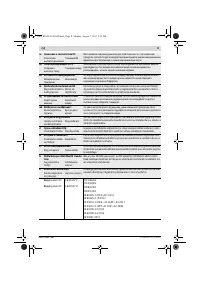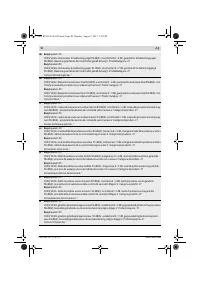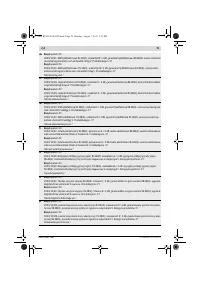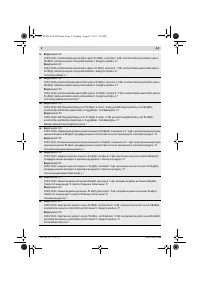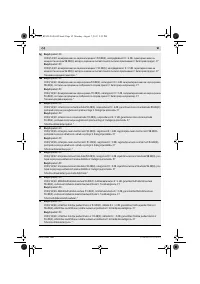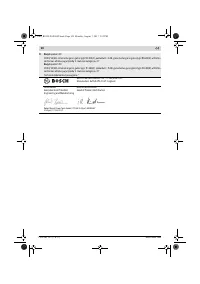Мойки высокого давления Bosch EasyAquatak 110 - инструкция пользователя по применению, эксплуатации и установке на русском языке. Мы надеемся, она поможет вам решить возникшие у вас вопросы при эксплуатации техники.
Если остались вопросы, задайте их в комментариях после инструкции.
"Загружаем инструкцию", означает, что нужно подождать пока файл загрузится и можно будет его читать онлайн. Некоторые инструкции очень большие и время их появления зависит от вашей скорости интернета.
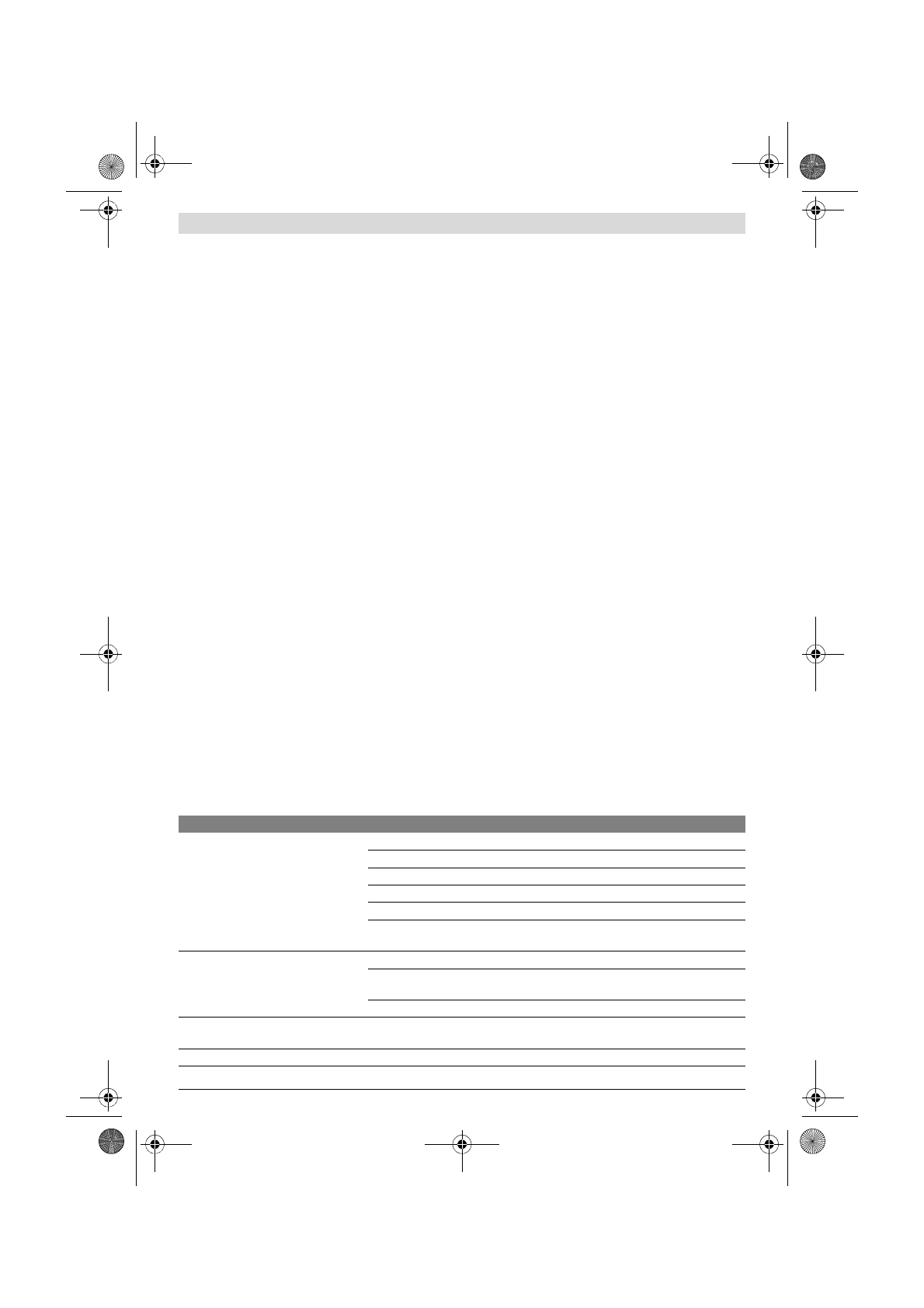
English |
17
Bosch Power Tools
F 016 L81 747 | (7.8.17)
Working Advice
General
Ensure that the pressure washer is on level ground.
Do not overreach with the high pressure hose or move the
pressure washer by pulling the hose, this could cause the ma-
chine to become unstable and fall over.
Do not kink or drive a motor vehicle over the high pressure
hose. Do not expose the high pressure hose to sharp edges or
corners.
Never use a roto nozzle to clean motor vehicles.
Working advice for cleaning with detergents
Only use cleaning agents suitable specifically for high
pressure washers.
We recommend that you use detergent sparingly for the sake
of the environment. Observe the recommended dilution on
the detergent label.
Recommended cleaning method
Step 1:
Attach the fan nozzle and remove the heavy dirt.
Step 2:
Attach the foam bottle and spray on the detergent
sparingly.
Step 3:
Rinse off the loosened dirt and detergent with the fan
nozzle.
Note:
When cleaning vertical surfaces, apply the detergent
from bottom to top. When rinsing off, work from top to bot-
tom.
Use with alternative water sources
The power washer is self-priming and enables water to be
drawn in from containers or natural water sources. It is
IM-
PORTANT
that the water filter is in clean condition when in-
serting it at the water inlet, and that only clean water is drawn
in.
Open tanks/containers and natural water sources
Use the Self Priming accessory kit comprising:
– Inlet strainer with non return valve
– 3 m reinforced supply hose
– Universal coupling to the pressure washer
This enables the pressure washer to draw water up to 0.5 m
above the water level in the source in approximately 15 sec-
onds.
Fully immerse the 3 m hose into the water to displace the air
in the hose. Connect the 3 m hose to the power washer and
make sure that the inlet strainer remains under water.
With the spray gun removed, switch the power washer on and
operate it until water flows uniformly out of the high-pressure
hose. If no water is coming out of the high-pressure hose after
25 seconds, switch the power washer off and check all con-
nections. As soon as water flows out of the high-pressure
hose, switch the power washer off and connect the spray gun
and spray lance to begin with the work.
It is important that hose and couplings are of good quality and
are tightly connected, and that the seals are undamaged and
properly inserted. Loose connections can impede the priming
(drawing in).
Water Tanks with outlet connections
When connecting the pressure washer to a water tank with a
suitable tap outlet, first connect the supply hose (not provid-
ed) to the tank outlet, open the tap to allow the water to dis-
place all the air in the hose and then connect to the pressure
washer.
Troubleshooting
Problem
Possible Cause
Corrective Action
Motor refuses to start
Plug not connected
Connect plug
Mains socket faulty
Use another socket
Fuse faulty / blown
Replace fuse
Extension cable damaged
Try without extension cable
Motor protector has activated
Allow to cool for 15 minutes
Frozen
Wait for pump/water supply hose/acces-
sory to thaw
Motor stops
Fuse faulty / blown
Replace fuse
Wrong mains voltage
Check that mains voltage corresponds to
specifications on the model tag
Motor protector has activated
Allow to cool for 15 minutes
Fuses blow
Fuses incorrectly rated
Change to a mains supply higher than the
pressure washer amp consumption
Motor starts but no pressure
Nozzle partly blocked
Clean nozzle
OBJ_BUCH-2949-002.book Page 17 Monday, August 7, 2017 2:55 PM
Содержание
- 146 Электроподключение
- 147 Эксплуатация
- 148 Во время использования
- 149 Транспортировка
- 150 Технические данные; Электробезопасность
- 151 Работа с инструментом; Включение; Указания по применению; Общее
- 152 Рекомендуемый метод очистки; Резервуары для воды со спускным краном; Поиск неисправностей
- 153 Техобслуживание и сервис; Техническое обслуживание
- 154 Охрана окружающей среды
Характеристики
Остались вопросы?Не нашли свой ответ в руководстве или возникли другие проблемы? Задайте свой вопрос в форме ниже с подробным описанием вашей ситуации, чтобы другие люди и специалисты смогли дать на него ответ. Если вы знаете как решить проблему другого человека, пожалуйста, подскажите ему :)



























































































































































































































